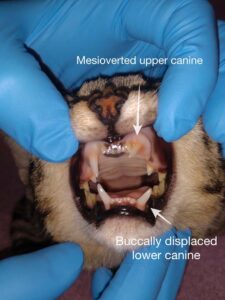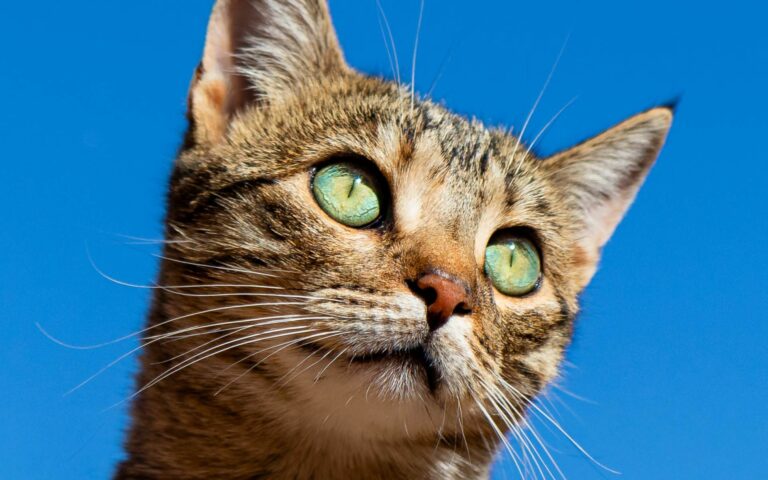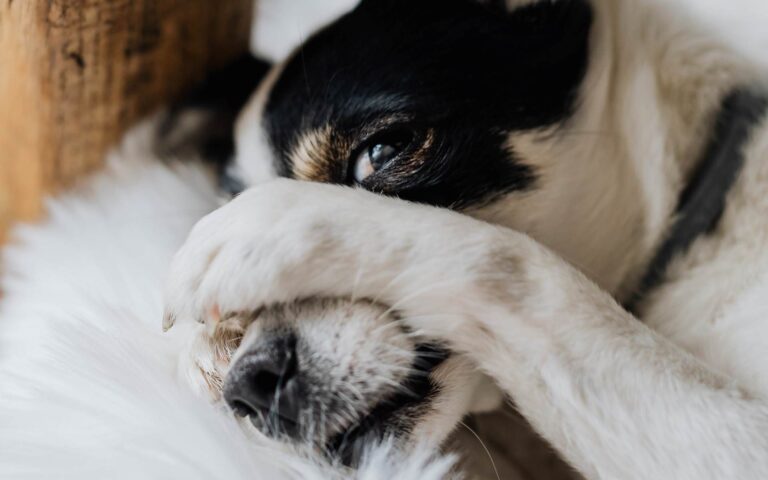Malocclusions (misaligned teeth)
Definition
The term “malocclusion” refers to any abnormal alignment of the upper and lower teeth. Teeth are organized in a very specific pattern and, in normal occlusion, they achieve the ideal goal of a comfortable and functional bite. When we treat a malocclusion, our primary goal is always the same- restoration of a comfortable and functional bite. For carnivores like the dog and cat, normal occlusions are pictured below.
- The mandibular (lower) canines sit in front of the maxillary (upper) canines
- The maxillary incisors sit in front of the mandibular incisors
- From the molars forward, the maxillary premolars are buccal to (outside of) the mandibular premolars.


Cause of Malocclusions:
In dogs and cats, malocclusions are almost always hereditary. It is recommended that individuals dogs and cats that have a malocclusion not be bred (see your primary veterinarian or veterinary dentist for advice regarding your specific pet). Occasionally, other conditions such as trauma, periodontal disease, and tumors can move teeth in relation to each other and create a malocclusion secondarily.
Diagnosis of Malocclusions:
Malocclusions are always interesting because every single one is different! For that reason, a specific treatment plan must be customized to the type and severity of each patient’s condition. There is no blanket treatment, and there are often multiple valid options depending on the owner’s preferences. Diagnosis of a specific malocclusion and its sequelae (additional conditions that are consequences of a primary condition), is via a complete oral exam. We can often diagnose and give treatment options based on our initial consultation because of our vast experience with these conditions; however, a thorough oral exam can only be completed with the help of sedation and oral imaging. Here is some additional terminology for malocclusions:
- Class I malocclusion: Malpositioned tooth or teeth, with normal jaw length interrelationship. There are many sub-classifications of this.
- Class II malocclusion: Mandibular distocclusion (a lower jaw that is too short relative to the upper jaw).
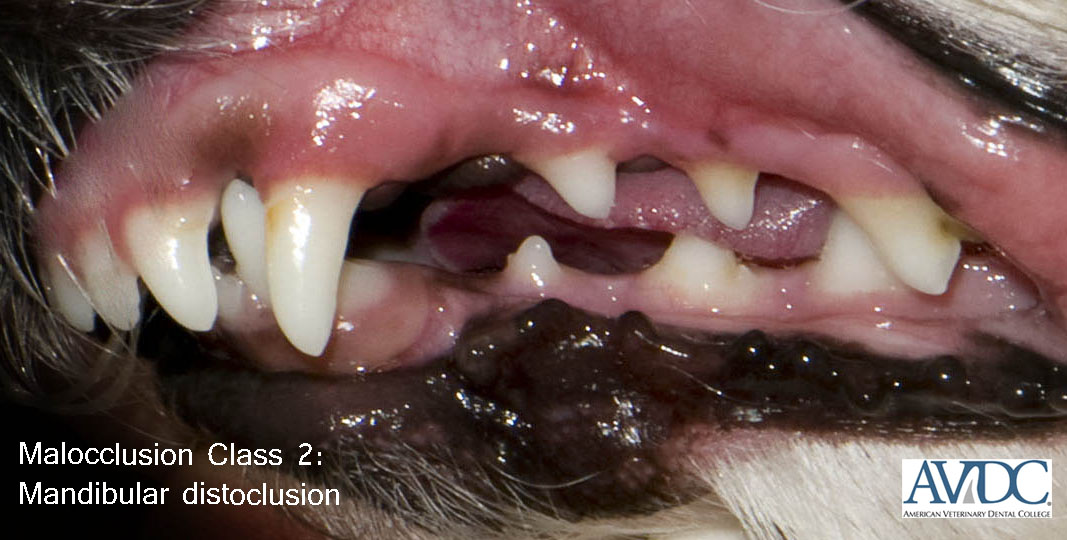
- Class III malocclusion: Mandibular mesiocclusion (lower jaw too long relative to upper jaw). Common in brachycephalic animals (bulldogs, frenchies, pugs, etc…)
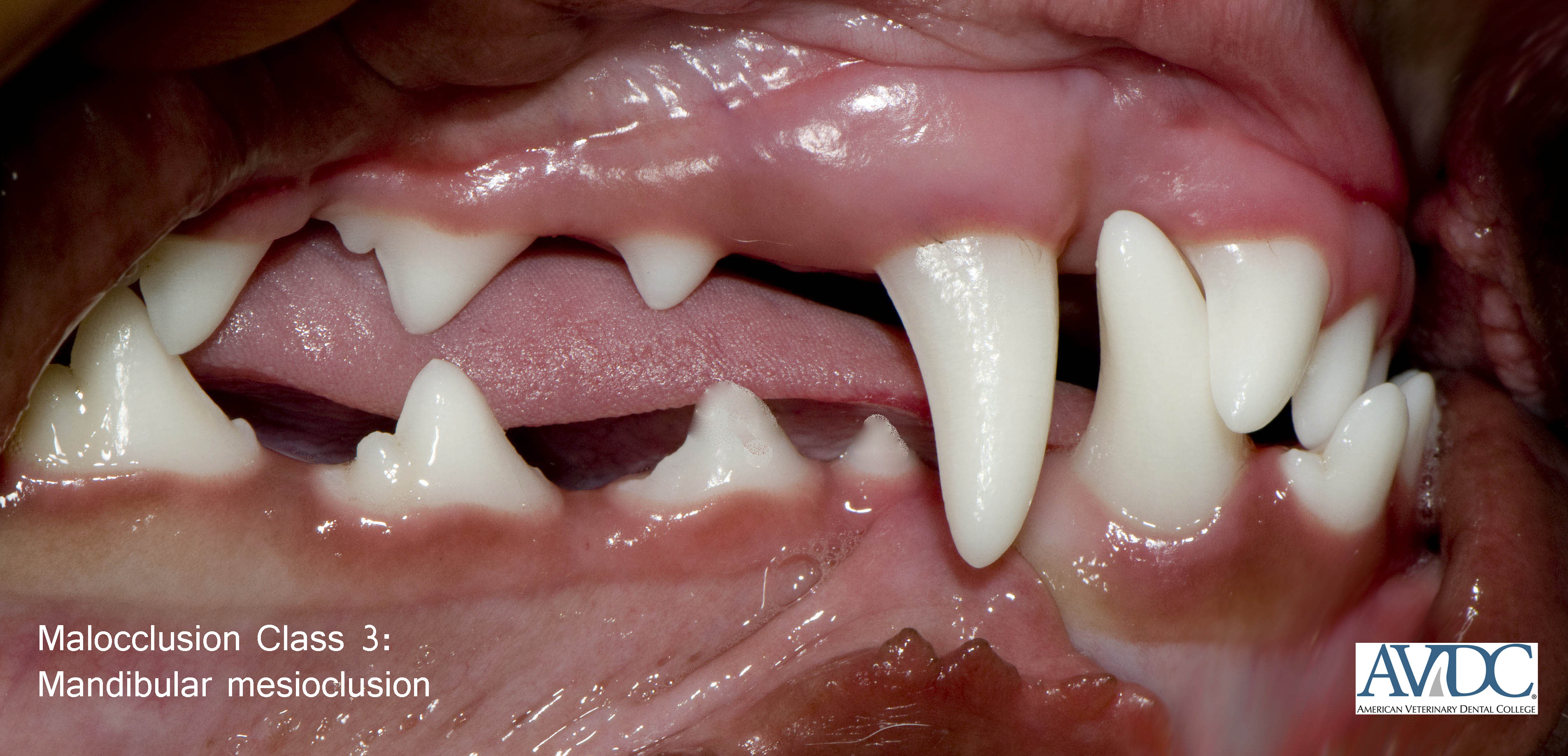
- Class IV Malocclusion: Asymmetrical skeletal malocclusion.
Treatment
No matter what the malocclusion is, any patient will have individual needs in order to restore a comfortable, functional bite. Some choices can offer a permanent cure after a single procedure, while others require strict follow-up, multiple anesthetic procedures, and meticulous home-care for success. From the most straightforward to the most advanced, treatments include:
- Selective extractions: One choice may be to simply extract the teeth that are causing discomfort. This choice is relatively quick, requires minimal follow-up, has no effect on ability to eat any food, and complications are rare.
- Odontoplasty: Re-shaping the tooth, for very mild malocclusions.
- Gingivoplasty: Re-shaping the gum tissue that is contacted by the tooth.
- Osteoplasty: Re-shaping the bone beneath the gum tissue.
- Crown-reduction with vital pulp therapy: An endodontic procedure that significantly shortens the tooth that is causing trauma.
- Orthodontics (tooth movement):
- Intermittent force orthodontics: These include temporary crown extensions, custom acrylic bite planes, and other methods.
- Active force orthodontics: Buttons, brackets, and elastic chains.
We often utilize a combination of these methods, and there are even additional methods that the owner can help with at home, depending on the specific condition. Importantly, all dogs and cats deserve to have a mouth that is free of pain! No matter what the malocclusion is, any mouth can be restored to normal comfort and function given the right conditions. Feel free to contact us for more information.
Case Examples:
Photos showing a Class I malocclusion in a cat—in this case, a mesioverted left maxillary canine tooth causing disruption and displacement of the lower canine tooth. This was treated with extraction of both canine teeth to provide this cat with a comfortable bite.



